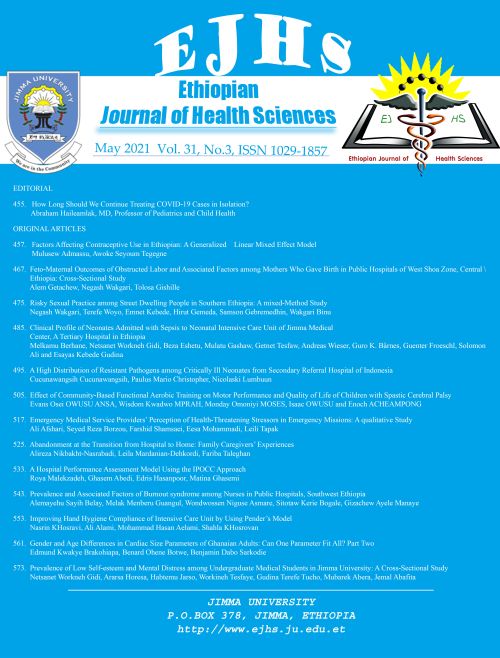Main Article Content
Effect of Community-Based Functional Aerobic Training on Motor Performance and Quality of Life of Children with Spastic Cerebral Palsy
Abstract
BACKGROUND: Efficacies of community-based exercise programmes have been well reported but there is scarce information on the expediency of community-based rehabilitation in a society where many of children with disabilities live in poorly resourced settings with extremely limited rehabilitative services. The study investigated the effects of community-based functional aerobic exercise (CBFAE) on gross motor function, walking distance, and quality of life of children with cerebral palsy (CP).
METHODS: Quasi-experimental design was used. Children with gross motor function classification system (GMFCS) levels I – II participated in eight weeks CBFAE training four times/week, 50 minutes/day at 40-80% maximum heart rate. Gross motor function (GMF), walk distance and quality of life were assessed
pre and post CBFAE training.
RESULTS: Significant improvement observed in GMF (Dstanding) (8.2%, P=.000), GMF (E-walking+running+jumping (5.12%, P=.004), walking distance (6.09%, P=.009). Higher significant positive effects of CBFAE observed in Social wellbeing and acceptance (107.10%, P=.000), and participation and physical health (105.04%, P=.005) by children parent proxy. Self-reported results showed that for CBFAE, significant positive improvements were higher in Pain and impact of disability (67.93%, P=.049) and Participation and physical health (60.00%,P=.042).
CONCLUSION: CBFAE training contributes majorly to improved standing, walking, jumping and running and selfesteem, quality of life of children with spastic CP. Clinicians and exercise therapists should essentially incorporate CBFAE training and activities into the management of children with CP for improved mobility and functional performances.






